Long a favorite vacation spot for its beaches and incredible scenery, Mexico is just as alluring and increasingly popular for its rich cultural heritage.
A wonderful mix of ancient civilizations and Spanish influences shows up everywhere. From its culinary traditions to its music and architecture, the country is a living cultural gem.
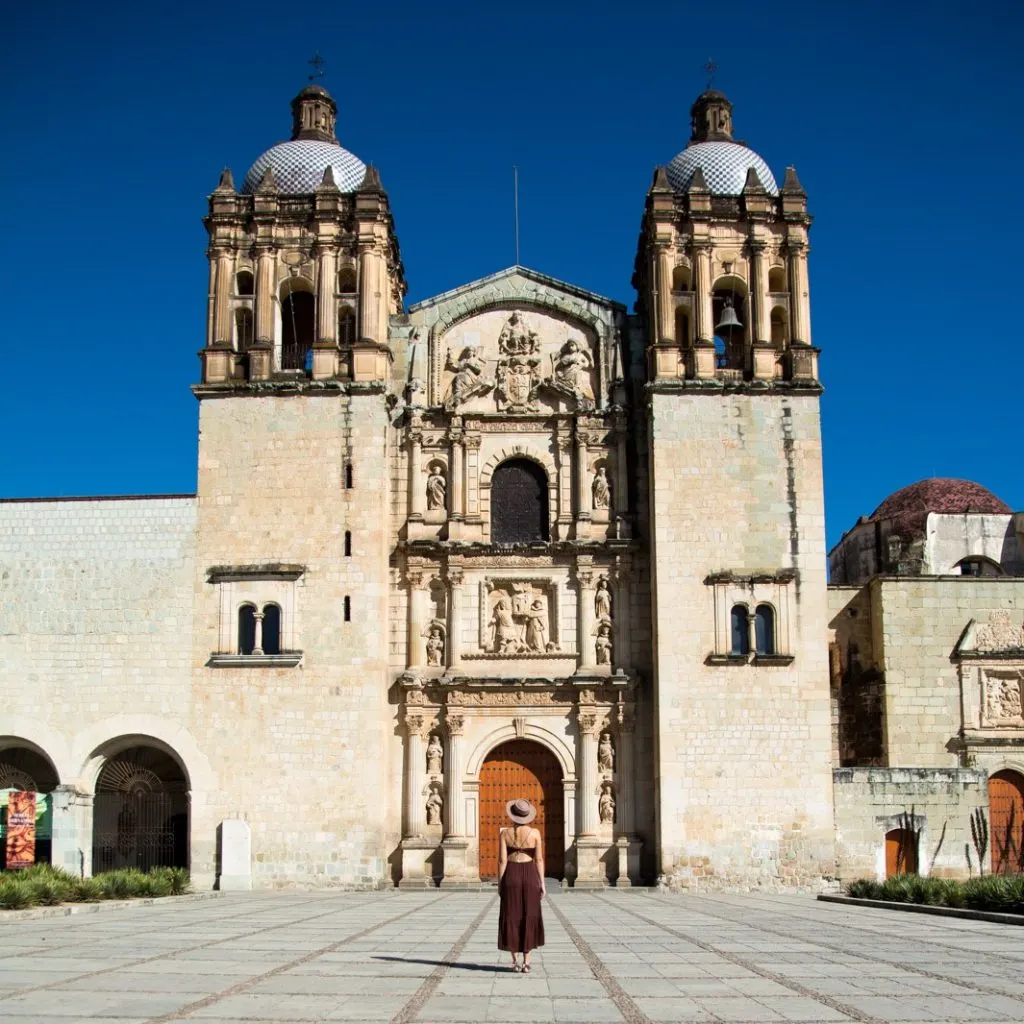
It features everything from fascinating sites that offer a glimpse into the Mayan and Aztec civilizations to present-day wonders. Not to count all the history that expired in between!
So it’s not a surprise that when it comes to UNESCO World Heritage Sites, Mexico boasts more than 30! There are exactly 35 sites, recognized because of their “outstanding value to humanity.”
These combine natural and cultural sites, and are each more astounding than the rest.
It can be hard to choose which ones to visit when there are so many! Luckily, I’ve done the work for you. Check out this guide with the best Mexico UNESCO World Heritage sites.
Table of Contents
PRE-HISPANIC CITY AND NATIONAL PARK OF PALENQUE
When talking about archaeological ruins in Mexico, names such as Chichen Itza, the Tulum ruins, or Teotihuacan are the first that come to mind.
There is, however, one lesser-known destination that is equally worthy of your time. Palenque is an ancient Mayan city tucked deep in the jungle of Chiapas.
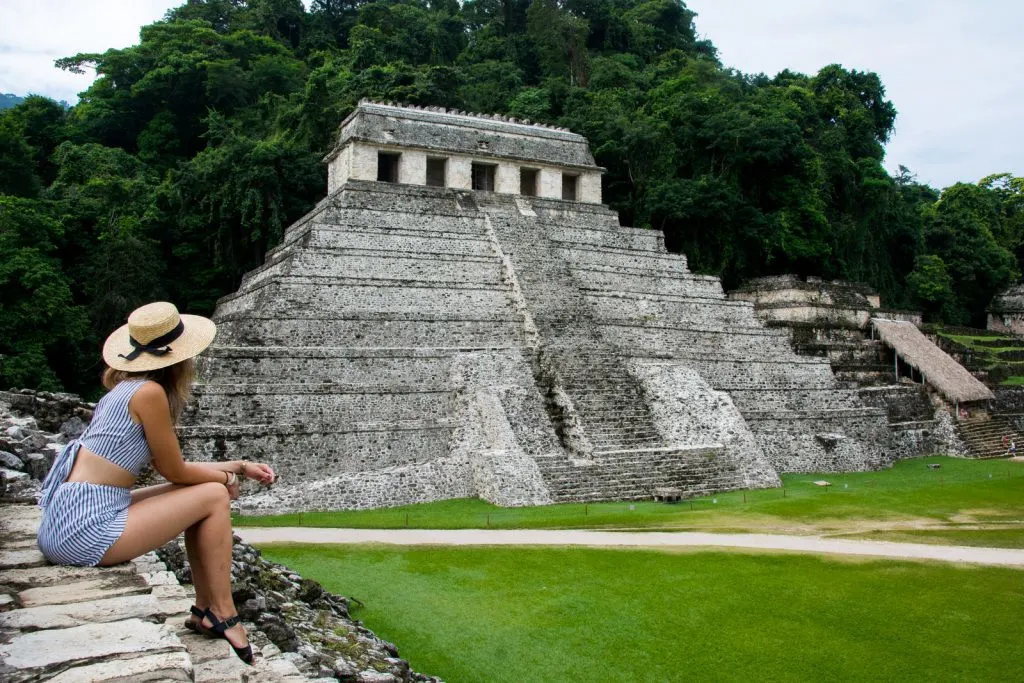
Little is known about the history of Palenque. Much of what was discovered came from the hieroglyphic inscriptions found during excavation.
These markings were inscribed in monuments and sculptures, and informed much of what is known about the city now.
This is what we know: Palenque was once a thriving city-state in Mexico that bloomed during the 7th century. It had connections with other big Mayan cities, such as Chichen Itza, but eventually, it went into decline for reasons yet unclear.
The site then started to be reclaimed by the jungle and remained undiscovered for centuries.
Today, this UNESCO World Heritage Site is home to some of the most incredible Mayan temples. It also hosts some of the finest collections of architecture, bas-relief carvings, and sculptures in Mexico.
The excavated area spans a total of 2.5 square kilometers, but archeologists believe that this can be as little as 10% of the actual size of the city. There are yet many treasures to uncover!
HISTORIC CENTRE OF MEXICO CITY
For many, Mexico City will be their first point of contact with the country. Hectic, vibrant, and multifaceted, Mexico’s capital city is the largest metropolitan area in the Western Hemisphere.
It’s also the economic and cultural core around which the rest of the country revolves.
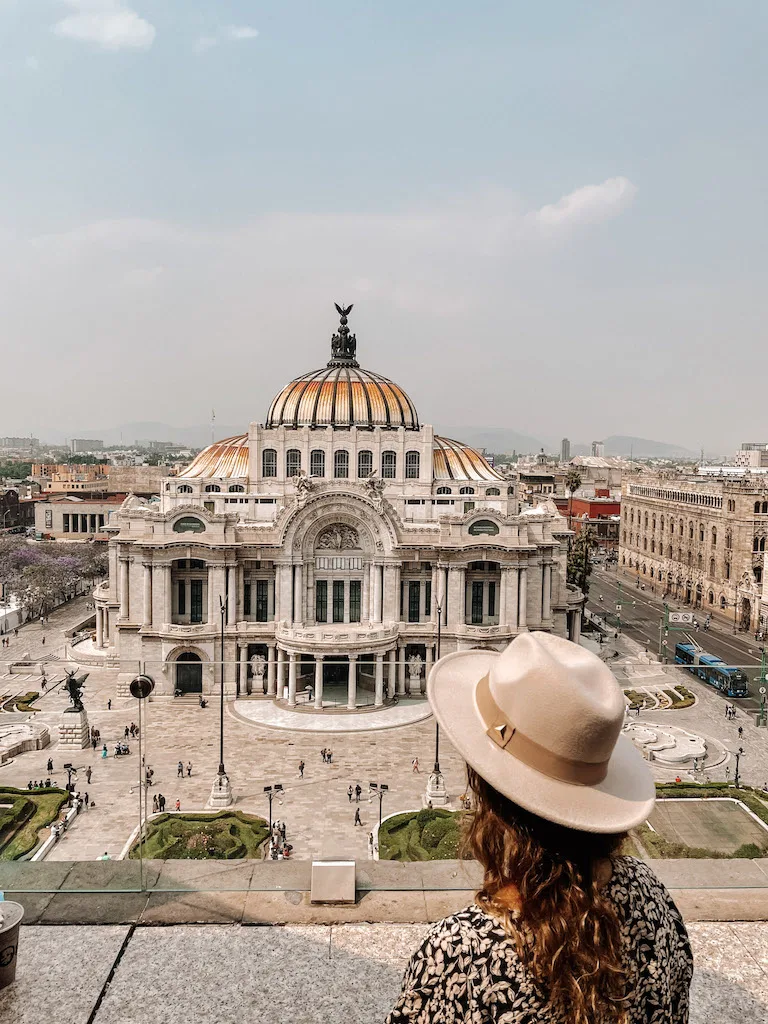
Present-day Mexico City was built by the Spaniards in what once was the most important city in pre-Columbian America. Tenochtitlán, the capital of the mighty Aztec empire, which was defeated by the army of Hernan Cortes.
Mexico City grew quickly during its colonial period. Eventually, it became the bustling capital of the country after its independence.
Since then, Mexico City has flourished into the buzzing urban center it is now, embracing its history as part of its identity. It perfectly combines pre-Hispanic, colonial, and contemporary elements into one beautiful symphony.
Now, it’s home to many intriguing museums, unique archeological sites, and beautiful natural spaces. Its inspired culinary scene, and driven population look toward the future but never forget the past.
Many public spaces have been revamped and are now among the major points of interest. Culture is flourishing, and Mexicans are breathing new life into the city after the devastating earthquakes of 2017.
The downtown area is small but buzzing. Don’t miss the Zocalo, Latin America’s largest main square, and Bosque de Chapultepec.
You should also visit Xochimilco, a traditional neighborhood named a UNESCO World Heritage Site. There you can sail along canals and taste amazing local food.
While it might not be your main destination, there are many chances that you’ll pass through Mexico City on your way in or out of the country. Take the opportunity to explore and appreciate the beating heart of Mexico!
PRE-HISPANIC CITY OF CHICHEN ITZA
Do I really need to introduce this one?
A Mexico must-see, Chichen Itza is probably on your bucket list already, and if not… well, it probably should be. Chichen Itza is one of the greatest archaeological sites in the Americas.
It’s one of the New 7 Wonders of the World, and among the most renowned UNESCO World Heritage Sites in Mexico, all packed into one. I rest my case.
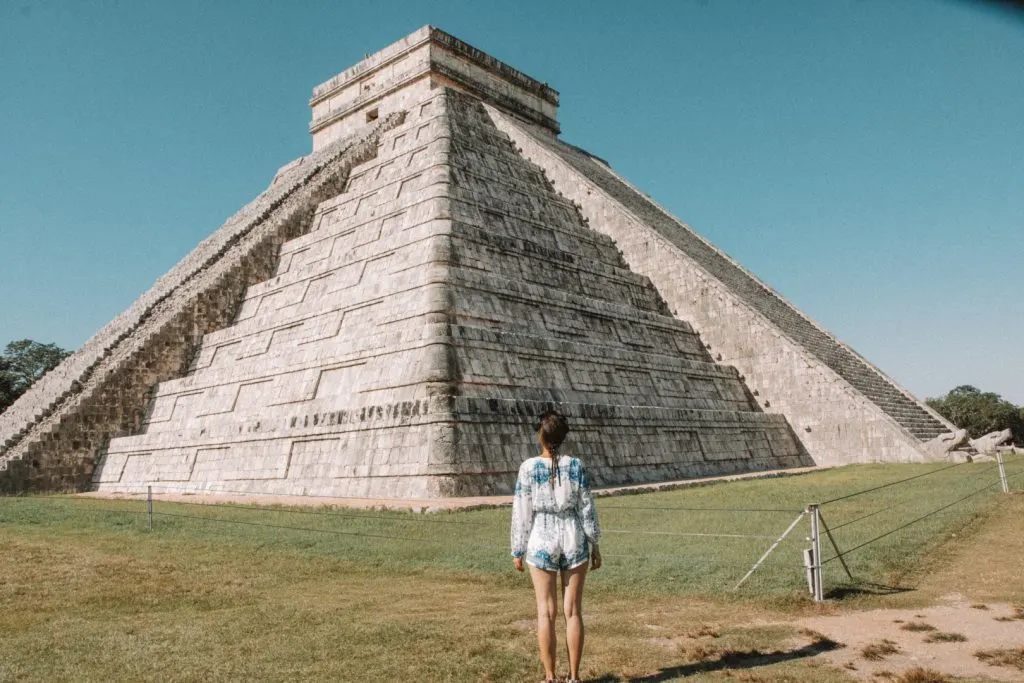
Tucked in the middle of the Yucatan jungle near Valladolid, Chichen Itza is the largest archaeological ruin of the Maya civilization.
A major political, religious and cultural center in the Mayan empire, it was also a site of pilgrimage for more than 1,000 years. It is often compared to sacred pilgrimage sites such as Jerusalem or Meca.
Chichen Itza dates back to the 6th century AD, and, as is the case with many other ancient cities in Mexico, the reasons for its decline are not clear.
The mystery only adds to its allure, and today, the site is visited by millions of tourists from all over the world. One of the mysteries that attract so many people involves its main temple, El Castillo.
Twice a year during the equinoxes, the afternoon sun casts a shadow in the shape of a feathered serpent, which slithers down the stairs for several minutes.
Unfortunately, it’s not possible to climb the pyramid anymore, but it’s impressive nonetheless.
Warning: it can get a bit crowded, so try to get there as early as possible, not only to avoid the crowds but also the heat!
Getting to Chichen Itza is pretty easy, either independently or as part of a tour (there are hundreds). If you go solo, though, I still recommend hiring a guide at the entrance.
They’ll tell you many incredible stories and you’ll learn so much more than what you can read at Lonely Planet. Worth every penny.
SIAN KA’AN
The Mayas that once inhabited the Yucatan Peninsula named this area “Origin of the Sky“. Maybe it’s the reflections of the sky in the water or the many shades of blue and green. We don’t know the true reason, but Sian Ka’an is a heavenly place.
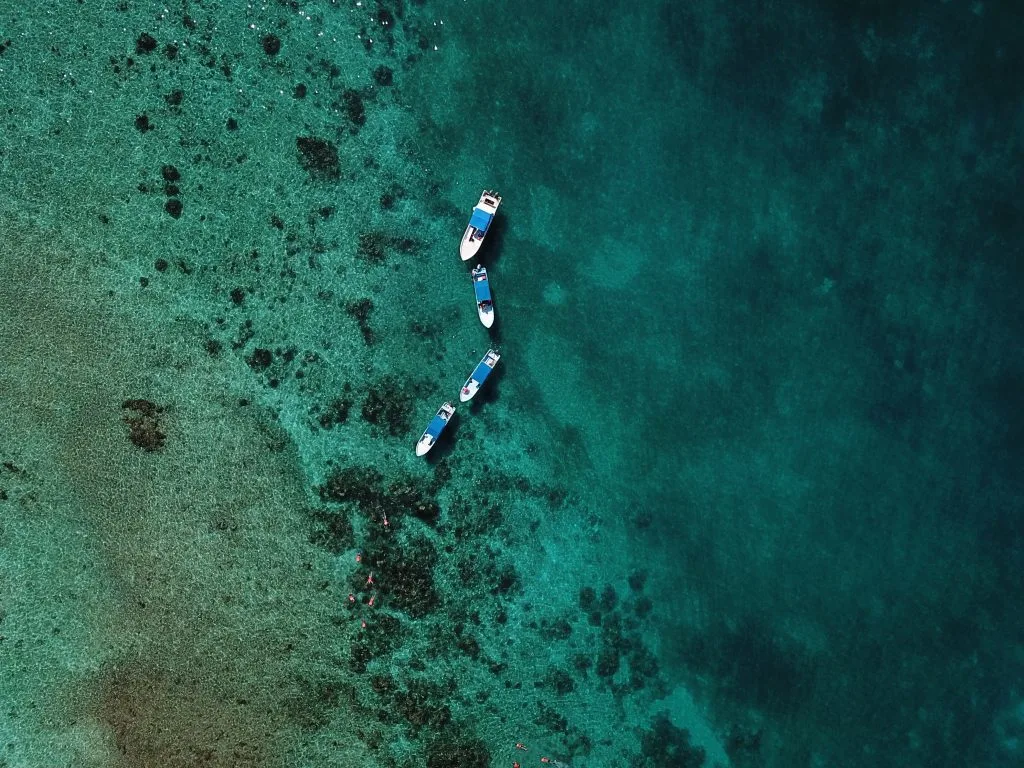
This UNESCO Biosphere Reserve is the largest protected area within the Mexican Caribbean. It’s a stunning place home to a remarkable variety of flora and fauna.
This includes tropical forests, mangroves, marshes, lagoons, and even a barrier reef, and more animal species than you can count.
It’s a complex hydrological system where all these species have coexisted since time immemorial.
I’m not exaggerating when I say that the Sian Ka’an Reserve is one of the most naturally astonishing and beautiful places in Mexico. And this is a lot to say considering the country’s striking diversity and sheer beauty!
It’s an intricate link of marine, coastal and terrestrial ecosystems, with more than 100 km of coastline over the Caribbean. An unmissable stop for nature lovers and environmentalists, and one of my favorite Mexico UNESCO sites.
PROTECTIVE TOWN OF SAN MIGUEL DE ALLENDE
Welcome to the city that has captivated so many locals, foreigners, and international chefs. So much so, that it has become a boom and one of the most visited historical cities in Mexico.
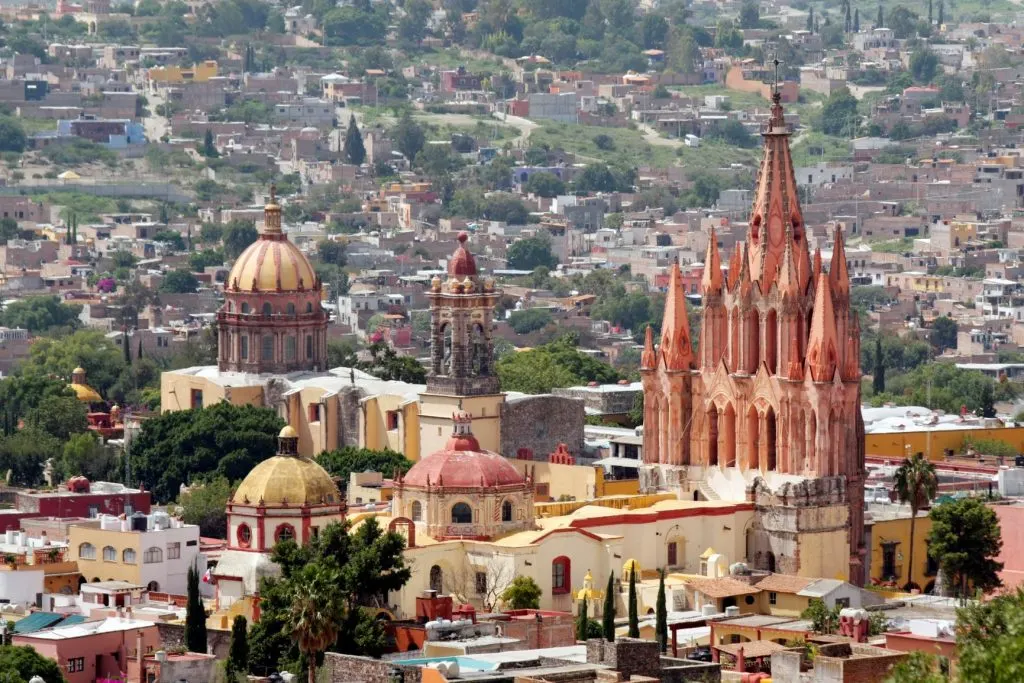
The name of the city is derived from two different people: 16th-century monk Juan de San Miguel and hero Ignacio Allende. This city served as the epicenter of the events where the Spanish Empire was defeated during the initial colonization war.
Arriving in San Miguel de Allende feels like stepping into a time machine. Now one of Mexico’s World Heritage Sites, this town has managed to retain its colonial charm while adding modern amenities —and even luxury.
Here you’ll find fine dining options and a lively nightlife that attracts thousands of tourists every year. The visitors are both domestic and international, giving the city a very cosmopolitan vibe.
The historic center has remained practically unchanged for 250 years. It still features its cobblestone streets, and the colonial houses have turned into art galleries and museums.
Among them stands out the imposing neo-gothic La Parroquia, a giant cathedral carved out of pink sandstone rising tall above the city. Right across the street, there’s the main plaza, a popular venue for music concerts and festivals, and the social heart of the city.
The surroundings of San Miguel are just as alluring. Vineyards, hot springs, desert hikes, Jesuit sanctuaries, and a botanical garden are among the many great day trips from town.
With no traffic lights and retaining a small-town feel, San Miguel de Allende has earned a reputation as a culture, art, and cuisine hub in Mexico. It’s growing rapidly but with class. Don’t miss out: It’s worth every minute.
HISTORIC CENTER OF OAXACA
Oaxaca City’s rich historical, cultural, artistic, and culinary legacies are at the heart of its popularity. The city exudes charm and character, but its surroundings are just as fascinating. It’s a fantastic starting point to explore its namesake state!
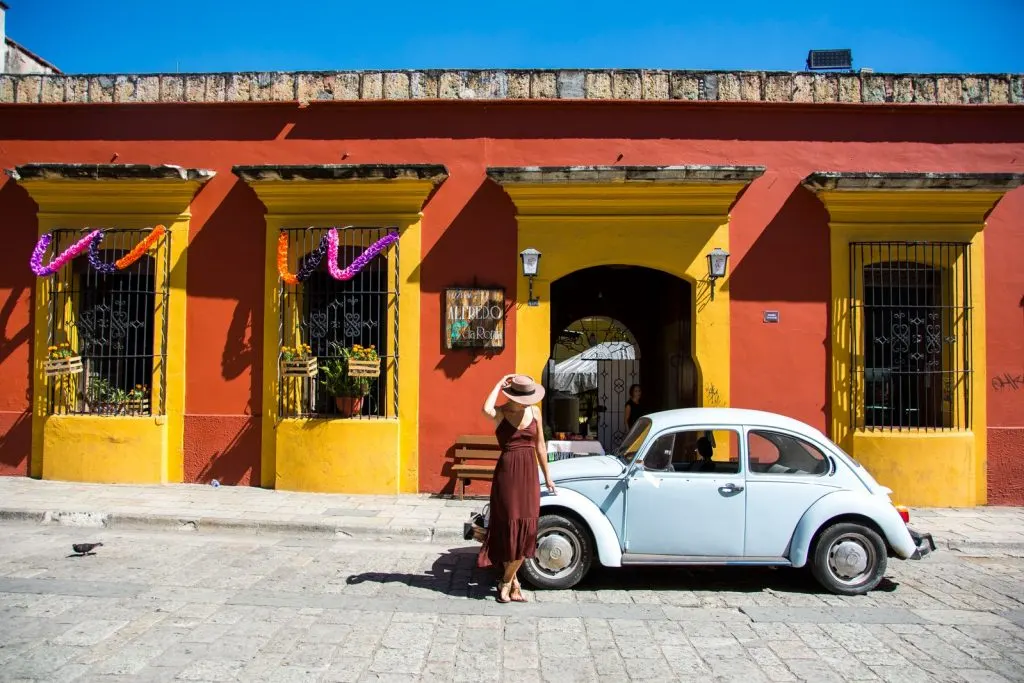
The city itself is a Mexico UNESCO World Heritage Site, with a cute historic center called “Verde Antequera”. Its beautiful constructions of green quarry in colonial style are worthy of the name.
The best things to do in Oaxaca include strolling around to admire the colonial architecture, and visiting the many arts and crafts stores and museums. You should also head to Mercado 20 de Noviembre, a feast of colors, smells, and tastes.
Try one (or many) of the vast array of mouth-watering traditional food, such as grasshoppers, quesillo, tamales, tortillas… and don’t forget to get some Oaxacan hot chocolate for a sweet bliss!
Oaxaca is the birthplace of mezcal, an agave-based smoky spirit central to most celebrations around here. Mezcal is drunk all over Mexico, but Oaxaca has the finest distilleries.
At sundown, hit one of the many mezcalerías (specialized mezcal bars) scattered around the center, and start the night on a good note!
Oaxaca City also makes for a great base to discover more of the area. From here, just to name a few, you can take day trips to the Mayan ruins of Monte Alban and Mitla, two other historical sites in Mexico. And don’t forget the unique formations at Hierve el Agua!
HISTORIC CENTER OF PUEBLA
A very welcome escape from Mexico City, Puebla stands its own as the cultural capital of the country. Its distinct architecture, history, cuisine, and culture have made it one of Mexico’s UNESCO Sites.
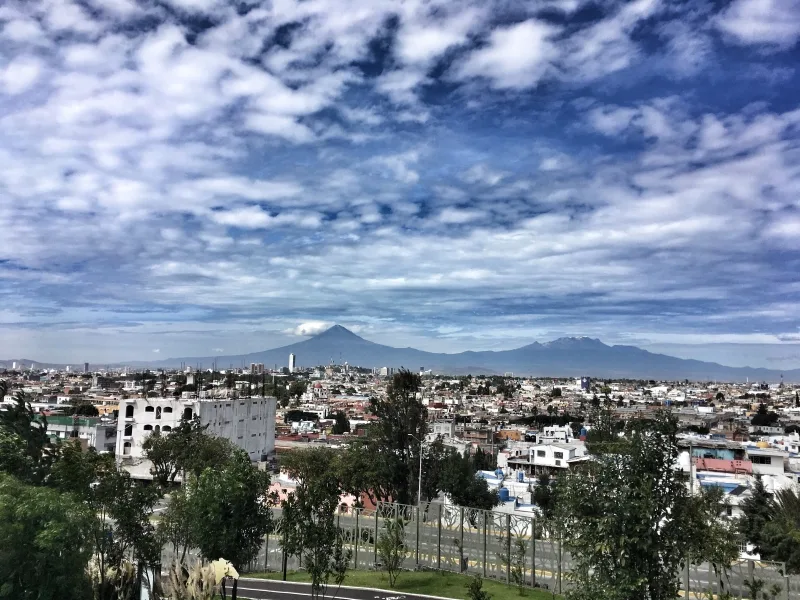
The cobblestone streets of Puebla teem with colonial buildings, museums, and colorful markets. When exploring, look for the buildings that use painted Talavera tiles, typical from the region.
Among the plenty of things to do in Puebla stands out a visit to Biblioteca Palafoxiana, the oldest library in the Americas. You should also join a walking tour to learn more about Puebla’s history or relax at Zocalo Square, right next to the Cathedral and the Palace.
Would you like to visit the largest pyramid in the world? I haven’t gone crazy! Believe it or not, you don’t need to go all the way to Egypt for that. The biggest pyramid in the world, by volume, is in Cholula, a small town only 10 km (6 miles) from Puebla.
Just hop on the free (yes, free) tourist train and, once in Cholula, look for the hill with the big church at the top. That’s the top of the pyramid!
You can also visit Cholula on your way to the nearby Iztaccihuatl and Popocatepetl National Park. This is where you get to hike between two of Mexico’s most famous volcanos!
But you can’t leave Puebla without having tried all the magnificent food around town. Mole Pueblano is number one on the list. It’s a thick, chili sauce that incorporates chocolate for a very distinctive flavor, typically served with rice and meat.
Try chiles en nogada (stuffed chili), memelas (corn tortillas filled with beans, salsa, and cheese), and cemitas (Puebla’s version of a burger).
Don’t forget to stop at one of the candy stores on Calle de los Dulces (translated as “sweet street”). There you can indulge your sweet tooth with traditional Pueblan sweet treats!
Are you drooling all over the screen already? I know I am!
HISTORIC TOWN OF GUANAJUATO

Known for its silver mining history, colonial architecture, and complex network of streets and alleys, Guanajuato is a festive town. It’s also hilly, and best enjoyed on foot at a slow pace, so take your time.
This UNESCO World Heritage Site sits at 2,000 meters (6,500 feet) above sea level. The mountainsides are steep, so I recommend you start your exploration by taking the cable car behind Teatro Juarez.
It will leave you at the mountain top, where you’ll get incredible views of the city and get a sense of where you are.
Once you’ve taken in the views, simply start wandering down the streets. Guanajuato is full of cheerful and colorful buildings in narrow alleys that branch out off the many plazas dotted around town.
It’s easy to get lost in this labyrinth of streets and alleyways, but that’s part of the fun! As long as you’re walking downhill, you’re fine. Just keep going, and eventually, you’ll end up in the historic center.
The streets of Guanajuato are so narrow that the government had to create an underground network of streets for cars and bigger vehicles.
This means little traffic overground, making Guanajuato a quiet haven, perfect for a stroll. I told you it was the best city to walk around!
A unique alley is Callejon del Beso, or “Kiss Alley”. Here the lane is so narrow and the balconies on each side are so close that those standing in them could easily reach out and kiss. One of the most peculiar UNESCO sites in Mexico, wouldn’t you agree?
Once you’re done walking the streets, go take a look at the Mercado Hidalgo to sneak a peek at everyday Mexican life.
Sit down for authentic gorditas (Mexican arepa), sopes (thick corn tortilla-like cake with different toppings), and tamales. Or you can always head out of town to visit one of the many nearby vineyards. That’s right, Guanajuato is in Mexico’s wine region!
AGAVE LANDSCAPE AND ANCIENT INDUSTRIAL FACILITIES O TEQUILA

I’m not drunk! – there is a town called Tequila, and it’s one of Mexico’s Historical Sites recognized by UNESCO. And, you guessed it, the birthplace of the iconic drink!
Did you know that “tequila” means “lava hill”? It will all make sense when you find out that the fields of blue agave plants grow in the rich volcanic soil at the foot of the Tequila Volcano. Go figure!
It would be a sin not to visit one of the many distilleries and haciendas around town. There you’ll get to taste tequila at its different stages of processing, and learn more about its production. There are more than a few party tricks for you to learn!
If you want to immerse yourself fully in the history of tequila-making, pay a visit to the Museo Nacional de Tequila (National Museum of Tequila).
Tequila here is not drunk without a second thought, as it happens in clubs worldwide. There is a deeper appreciation of the drink, everything it takes to produce, and what it means for their culture.
People here wait patiently for years for the agave plants to mature and will teach you how to savor tequila correctly, with no rush.
After you’ve tasted a few samples, wander around the cobblestone streets of Tequila. They’re full of colonial buildings and food stalls that will open your appetite just as much as tequila!
This is one of the most unique and authentic places to see in Mexico, so take your time, Tequila is in no rush, and you shouldn’t be either.
HISTORIC MONUMENTS ZONE OF QUERETARO

Santiago de Queretaro is a growing name among the Mexico World Heritage Sites. This university town has a lively and youthful vibe in the air, which is pleasantly cool all year round thanks to its spring-like weather.
Its squeaky clean and flat streets are very inviting for a wander around town. You’ll do good to sit in one of the many gorgeous plazas and people-watch while savoring traditional enchiladas.
Queretaro is known not only for its relaxed living but also for its very well-preserved colonial architecture. It features tons of museums, galleries, and churches to explore.
The distinctive landmark here, however, is the pink stone Roman-style aqueduct. It feels like being back in Europe for a minute!
Built in the 1700s, it has been bringing water to the city from the mountains for centuries now. The aqueduct is almost 2 kilometers long!
Walk to the Mirador de Los Arcos lookout point for a panoramic view.
There’s a lot to do around the city too! Visit one of the several wineries around Queretaro, or get your nature fix hiking up Peña de Bernal.
It’s the third-largest monolith of its kind in the world! You can also head out to the suburbs and discover the pyramid El Cerrito, which dates back to 700-900 AD!
PRE-HISPANIC TOWN OF UXMAL
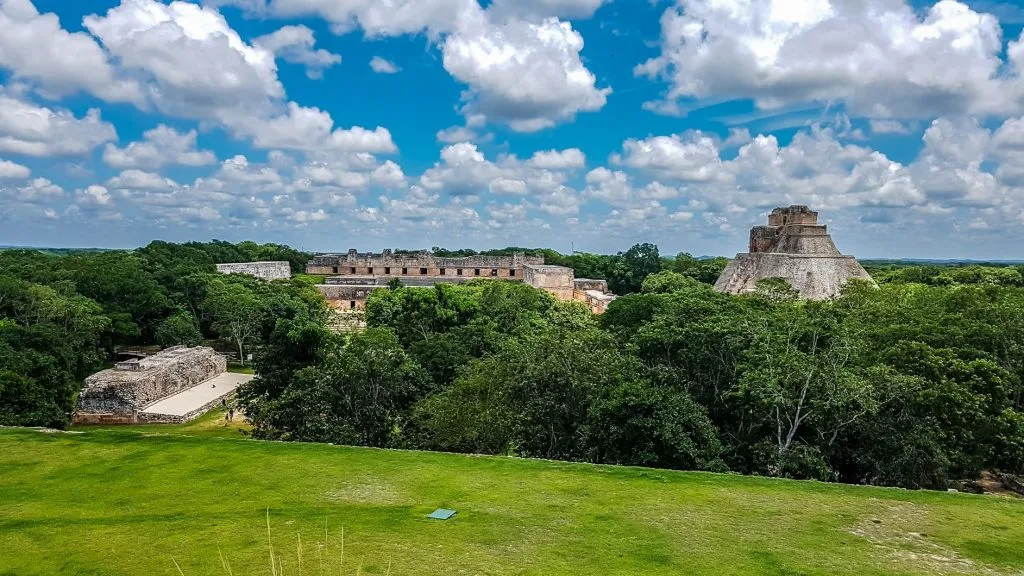
Uxmal has been many times spoken of as the prettiest of the Mayan ruins. However, it’s been somewhat relegated to second place in the list of best UNESCO World Heritage Sites in Yucatan after Chichen Itza.
This is in part because the latter is closer to the big resort towns and enjoys more popularity. But trust me when I say Uxmal is worth every single minute of your time.
The ancient city of Uxmal used to be the most powerful Mayan city in the Yucatan peninsula along with Chichen Itza. It’s also the most important Mayan ruin near Merida.
Unlike most other Mayan cities, Uxmal is not geometrical. Instead, its layout is adapted to the hilly terrain, and it is also believed to be based on astronomical phenomena.
With exquisite Mayan art and imposing pyramids, a trip to Uxmal is an absolute must when in Merida. A good idea is to combine your visit to Uxmal with a tour to explore the many cenotes around the area. I mean, cenotes are always a good idea!
If you can’t have enough of Mayan sites, there are other smaller sites that you can add to the trip. These are off the beaten path and include the sites of Kabah, Labna, Xlapak, and Sayil.
HISTORIC CENTRE OF MORELIA

Mexico really is a treasure trove of charming colonial towns and there’s much to discover beyond the beaches and shinier city names. Morelia is no exception. There’s a reason it was named a UNESCO World Heritage Site, after all.
Morelia feels frozen in time, and I mean this in the best way possible. Founded in the 16th century by the Spanish settlers, the pink stone buildings are in impeccable shape.
The historical center contains more buildings cataloged as architectural masterpieces than any other place in Mexico! They give the city its unique ambiance and looks.
Just like Queretaro, Morelia is home to one of the few aqueducts in the country. In pure Roman style, the Morelia aqueduct brings spring water to the city since the 18th century! It’s illuminated at night —a lovely sight perfect for photographs.
I was going to say that you shouldn’t forget to check out the cathedral, but it’s pretty hard to miss! Its towers are among the highest in the country and can be seen from virtually anywhere in the city.
But the attractions don’t end there. The area is ripe with natural beauty as well as urban, rich history and legends, and mouth-watering gastronomy.
Around town, there are tons of museums, and you can go on day trips to forests and even the youngest volcano in the world, a stone’s throw from town.
Morelia is also famous for its sweets, originally produced in the convents around town, but now found everywhere. Visit the Mercado de Dulces -meaning Candy Market– to satisfy your sweet tooth.
Don’t forget to hop from bar to bar to try all the traditional savory delicacies awaiting you!
PRE-HISPANIC CITY OF TEOTIHUACAN
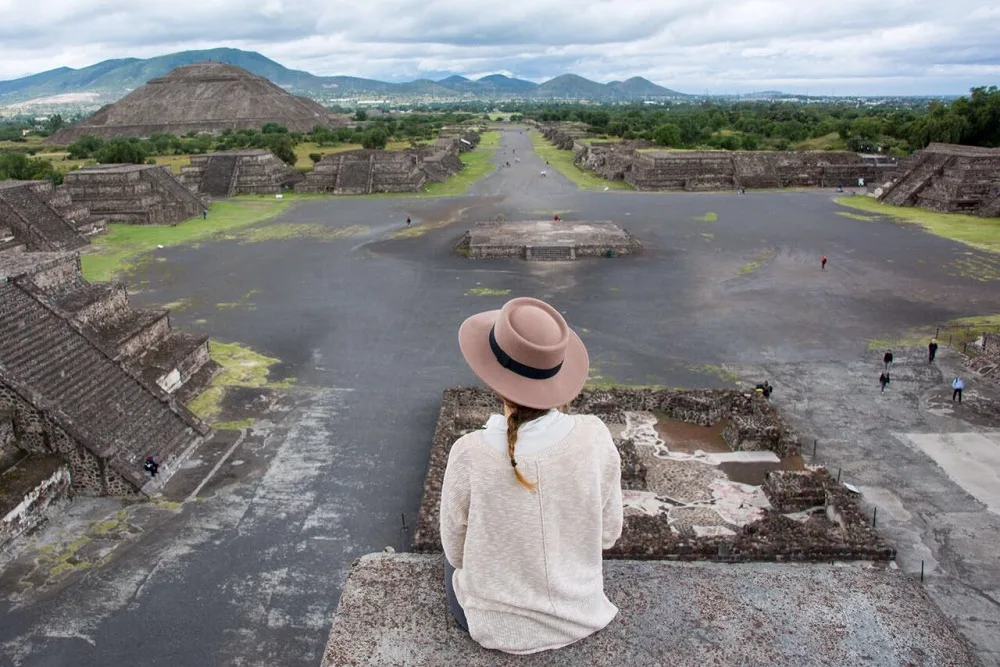
This massive archaeological complex and UNESCO Site is the most visited tourist attraction in Mexico.
Right outside Mexico City, Teotihuacan was a flourishing city during the pre-Columbian era and one of the biggest in the Americas. Today it’s visited by millions of people every year.
Picture this: when the city was in full bloom (between the 1st and 7th centuries AD), virtually the whole population in the Valley of Mexico lived there! So yes, it’s a pretty big site and it’s worth taking the time to roam around for a few hours.
The highlight here is the Pyramid of the Sun, which I bet you’ve seen in a picture of Mexico or two! This is a 65-meter tall pyramid (213 feet) that you can climb and get stellar views of the surrounding valley.
Just as impressive as its size is its history. Or should I say, mystery? The truth is that archeologists are at a loss about who built the city, when exactly, and why it went into decline.
Teotihuacan was eventually abandoned a few centuries after its zenith, but the reasons are unclear. It’s a story that seems to repeat itself throughout the ancient cities of Mexico.
Walk along the Avenue of the Dead, at the center of the complex, and soak up the history, the mystery, the architecture, and the surroundings. It’s a very humbling experience.
Apart from the Pyramid of the Sun, there are many other smaller pyramids that you can climb. Hire a guide to get a full experience, it’s worth it!
Teotihuacan is only a few kilometers outside the capital, and it’s very easy to access. If you’re going through Mexico City at some point, don’t miss the chance to visit. I promise it’s an experience you won’t forget.
